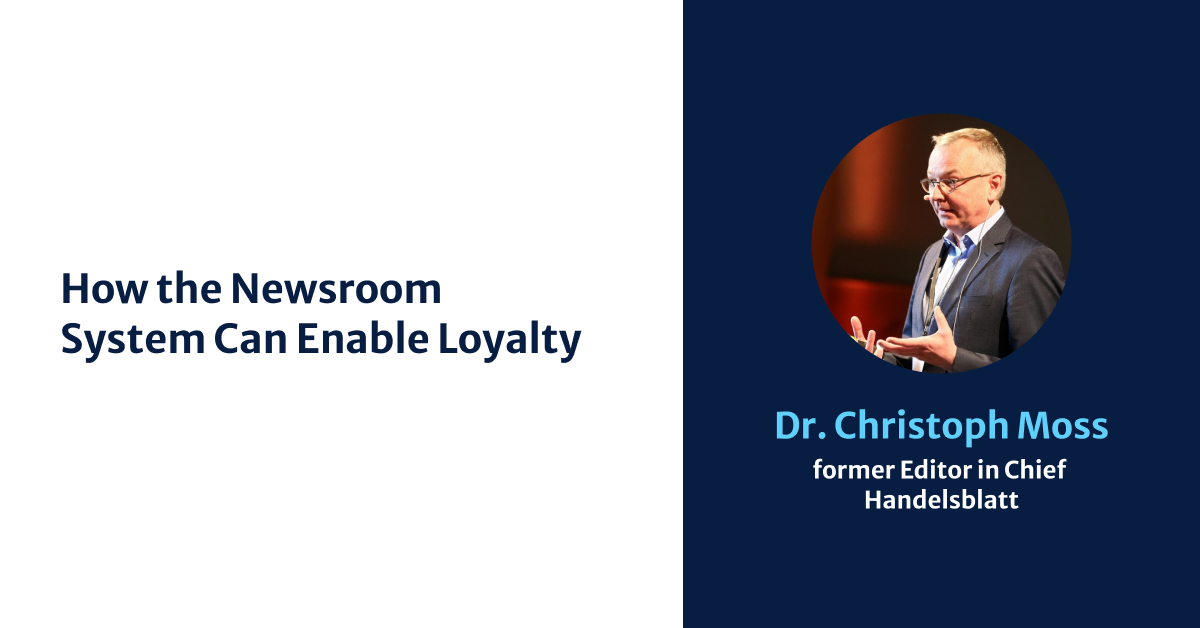Helsingin Sanomat Boosts Subscriptions with Editorial Planning Insights
A Case Study in Digital Transformation and Editorial Planning
Samuli Leivonniemi is the Head of News Desk at Helsingin Sanomat, the largest daily newspaper and a significant user of editorial planning software in Finland. Known for his enthusiasm for both work and celebrations, Samuli recently had reasons to celebrate: Helsingin Sanomat's subscription success.
The number of digital subscribers at Helsingin Sanomat has reached 250,000. While this number may seem modest compared to larger publishers, it represents five percent of the Finnish population, a notable achievement in a country of Finland's size.
The Growth of Digital Subscribers
Samuli Leivonniemi shared his insights at the Kordiam Editorial Days 2019 in Hamburg. "Not only had our subscriber base grown for the first time in 25 years, but the trend also continued last year. So, how did we do it?"
The success story involves taking a hard look at what wasn't working. "We started subscriptions for online content in 1996 but switched to free access in 2000. By 2003, everything in the daily print edition was published online. In 2012, we introduced a metered paywall with five free articles per week. By 2016, we realized we had a problem."
Addressing Subscription Challenges
Samuli noted that their subscribers were aging rapidly. "Our subscriber base was aging by three years every two years. While we had a younger online audience, they weren't paying. We realized the younger audience would only pay for content if they couldn't get it for free."
The success of platforms like Spotify and Netflix provided a clue: young audiences are willing to pay for content if it's presented in the right way. This led to the creation of the "Diamond story" strategy.
"We called them diamond stories because the name suggests something valuable. These articles are hand-picked, unique, and take a long time to develop, just like real diamonds."
Implementing the Diamond Story Strategy
Diamond stories became deep-dive investigative pieces and exclusive content behind a hard paywall costing €9.90 per month. To promote these, a diamond symbol was used in marketing, and a two-week trial period was offered.
However, marketing alone wasn't enough. Samuli and his team focused on identifying the right content. "We come from a traditional quality newspaper background, covering politics, economics, and international news. But to drive subscription growth, we decided to emphasize well-being, culture, and popular science, subjects that convert well among the under forty-fives."
Overcoming Cultural Challenges in Editorial Planning
The shift to a more flexible editorial strategy required the use of an editorial planning tool. "The answer to finding diamond content is the 'wow' story. These are highly visual, in-depth interviews or stories that provoke strong emotions."
Samuli shared an example: "A Finnish politician discussing her cancer diagnosis and decision to leave her job. If it provokes emotions, it's a Diamond story."
Helsingin Sanomat also found success with advice stories, such as those about digestion and stomach problems, which resonated well with their audience.
Maintaining Quality and Measuring Success
While breaking news isn't ideal for diamond stories, exclusive investigative work is. "We wrote about Nepalese restaurants in Finland engaging in labor trafficking. Quality reportage that can't be found elsewhere sells."
Individual voices and branded reporters also play a crucial role. "Analysis and commentary from our top writers are part of our strategy."
The move to new metrics helped identify valuable content. "We now use 'sessions' as a loyalty metric rather than clicks. We found that interactivity increases reading time by 17%. This has become a common goal for both editorial and commercial teams."
Shifts in Editorial Planning
Helsingin Sanomat created a new role, the Planning News Editor, to manage their content strategy. "We have 150 articles a day, but only five to ten go behind the paywall as Diamonds. We plan major stories weeks or even months in advance."
This strategic planning challenges the notion that news can't be planned. The subscription growth and changing news dynamics suggest otherwise. Samuli's conclusion underscores their success: "What you need are damn good stories. Quality sells."
In summary, Helsingin Sanomat's journey underscores the importance of using content planning software and editorial planning tools to drive digital subscription growth. Their success story illustrates that with the right strategy, quality content, and effective planning, even traditional newspapers can thrive in the digital era.

